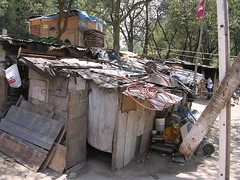A recent article (subscription needed) in Science lists new technologies that may decrease costs or/and increase efficiency.
In the past few years, [chemist David] Ginger [of the University of Washington, Seattle] and others point out, solar researchers have hit upon several potential breakthrough technologies but have been stymied at turning that potential into solar cells able to beat out silicon. “The next couple of years will be important to see if we can overcome those hurdles,” Ginger says. Although most of these novel cells are not yet close to commercialization, even one or two successes could dramatically change the landscape of worldwide energy production.

Light hitting today’s photovoltaic cell creates current if there is enough energy to excite the electrons. Efficiency is about 15 – 20% in commercial cells. The rest of light hitting the PV cell becomes waste heat. The theoretical limit of this kind of technology is 31%.
Increasing efficiency

Colors vary with size of quantum dots
The quantum world is different. Varying the size of quantum dots (crystals of a few hundred or thousand atoms) changes the colors absorbed or emitted. Theoretical efficiency may be as high as 44%, or even more with concentrated sunlight, but the details are difficult: efficiency today is only 2.5%, up from 1.6%.
To learn more:
• Nozik and Hanna,
• Los Alamos,
• Livermore,
or just search on quantum dot.
Cheaper technologies
Organic molecules, such as plastics, are cheaper to manufacture, but they respond to a smaller part of the spectrum, and waste most of the light. Add some metal nanoparticles, and there is surface plasmon resonance: light causes the nanoparticle to act like an antenna, capturing and channeling more of the light.
The good news is that the use of silver nanoparticles increases efficiency 40%; the bad news is that it is still less than 1%. Still, Ginger calls such a large increase “very promising.”
Another approach to organic solar cells is to increase the surface areas between the layers by shifting from one layer on top of another to layers that interpenetrate: bulk heterojunction. Alan Heeger of the University of California feels they may be ready for the market by 2010.
Other research strategies are being pursued.
For now, there appears to be no shortage of ideas about creating new high-efficiency, low-cost cells. But whether any of these ideas will have what it takes to beat silicon and revolutionize the solar business remains the field’s biggest unknown. “There are a lot of ways to beat the Shockley limit [31% efficiency limit] on paper, but it’s difficult to realize in the real world,” Nozik says. So far, it’s not for want of trying.
Subsidizing today’s technology
Severin Borenstein, director of University of California Energy Institute, has recently analyzed The Market Value and Cost of Solar Photovoltaic Electricity Production (go here for his talk and to download the analysis).
Borenstein looks at the cost of PV, including considerations re time of day and location. In the near term, the cost/ton greenhouse reductions people (legislators and others) are willing to pay will be less than $20, and it will be a while before they are go above $100/ton, in part because most renewables become good choices at less than that cost. The real cost of today’s technology, no matter what reasonable assumptions are made about the real cost of money or the yearly increase in electricity rates, exceeds $100/ton. Research into better PV looks like a much better use of the yearly $300 million California subsidy of installing solar cells.





